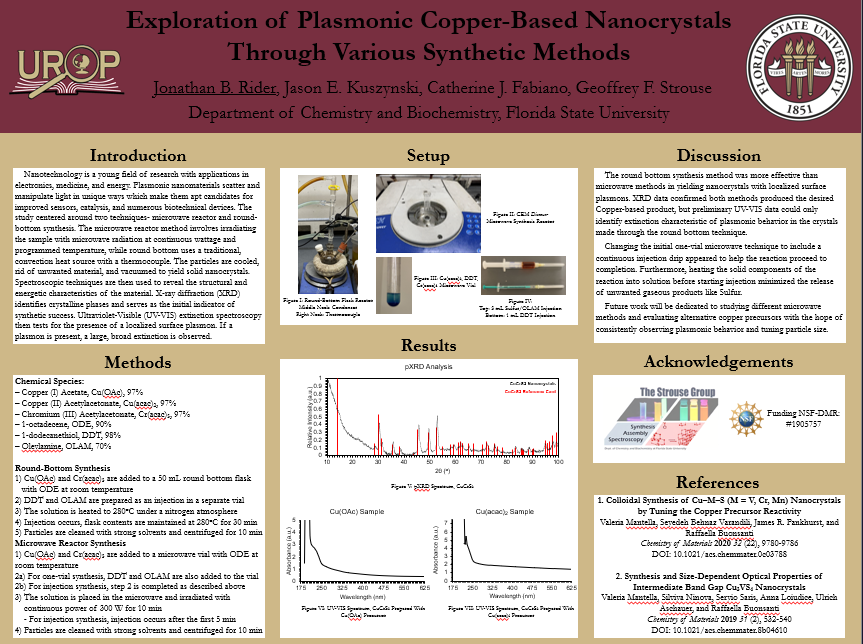Research Symposium
23rd annual Undergraduate Research Symposium, April 6, 2023
Jonathan Rider Poster Session 4: 4:00 pm - 5:00 pm/ Poster #213

BIO
My name is Jonathan Rider, and I am a second year Chemical Engineering student from St. Augustine, FL. I am conducting research on Plasmonic Copper-Based Nanomaterials. I am more generally interested in research working towards optimized and sustainable chemical and biomedical processes. In the future, I hope to take my research to the next level in graduate school, and ultimately work on projects in a leadership or administrative role.
Exploration of Plasmonic Copper-Based Nanocrystals Through Various Synthetic Methods
Authors: Jonathan Rider, Jason KuszynskiStudent Major: Chemical Engineering
Mentor: Jason Kuszynski
Mentor's Department: Chemistry and Biochemistry Mentor's College: Arts and Sciences Co-Presenters:
Abstract
Nanotechnology is a young field of research with applications in electronics, medicine, and energy. In this study, we report different techniques for synthesizing plasmonic copper-based nanoparticles. Plasmonic materials scatter and manipulate light in unique ways which make them apt candidates for improved sensors, catalysis, imaging, and numerous biotechnical devices. The study centered around two techniques- microwave reactor and round-bottom synthesis. Both entail mixing chemical reactants under nitrogen to prevent ambient air side-reactions. The microwave reactor method involves irradiating the sample with microwave radiation at continuous wattage and programmed temperature, while round bottom uses a traditional, convection heat source with a thermocouple. The heated particles are cooled, rid of any unwanted material using organic solvents, and vacuumed to yield solid nanocrystals. Spectroscopic techniques are then used to reveal the structural and energetic characteristics of the material. X-ray diffraction (XRD), which identifies crystalline phases, serves as the initial indicator of whether the synthesis was successful. Ultraviolet-Visible (UV-VIS) extinction spectroscopy then tests for the presence of a localized surface plasmon. If a plasmon is present, a large, broad extinction is observed. Initial data suggests the round bottom synthesis technique to be most effective in producing high energy surface plasmons. UV-VIS data from the microwave method did not yield any characteristic extinction. Future work will be dedicated to studying materials made from different copper precursors with the hope of tuning particle size.
Keywords: Chemistry, Materials, Reactions


